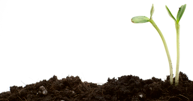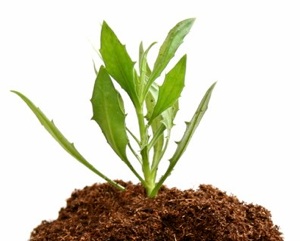Beneficial Microbes in the Soil
Building diversity in the soil is the key to having a healthy and productive system. Pastures, crops, orchards, vineyards and vegetables all have different requirements in terms of species but having a wide range of diversity means that the soil is better able to provide the required nutrients, suppress pathogens, increase water holding capacity plus allow for increased root growth and plant development.
Bacteria: The most prolific microbe in terms of numbers within a soil. Play an important role in decomposing organic materials, retaining nutrient and suppressing disease. Assist in building soil structure by secreting glues which bind soil particles together, this affects the water infiltration and water holding capacity of the soil. Bacteria hold onto the most N of any microbe in the soil. Also help prevent erosion, leaching of nutrients from soils and assist in the breakdown of chemical residues.
Fungi: Are important in the breakdown of organic materials, in particular cellulose and lignins. Important in retention of nutrients such as N,P,K, S and in particular Ca in soils. Also prevent nutrient leaching and erosion as fungal strands hold soil particles together to form larger aggregates. Increase soils ability to hold oxygen and water. Play a major role in suppressing pathogens.
Mycorrhizal Fungi: Associated with the roots of many plant species these fungi colonise and form a symbiotic relationship with their host plant. Allow plants to access a greater volume of soil for increased uptake of water and nutrient. Secrete enzymes to convert nutrients into plant available formats. Increase protection against pathogens and root feeding nematodes.
Protozoa: Play a major role in releasing nutrient into soils in a plant available format. Mostly feed on bacteria but some also feed on fungi. Three different species of protozoa within soils can be detected by shape and mode of movement. Amoebae and flagelletes indicate better soil health while high ciliate numbers indicate that soils are compacted and lack adequate oxygen.
Nematodes: Divided into four different groups based on what they consume or prey on. Nematodes can be identified by their mouth parts which indicate if they are bacterial or fungal feeders, predatory or root feeding species. Beneficial nematodes can prey on root feeding nematodes, pathogens, cycle nutrients plus open up pore spaces within the soil profile.
Information adapted from The Soil & Foliar Foodwebs by Dr Elaine Ingham









